From Aristotle to Edwin Hubble
Aristotle and the First Cosmologists
At the beginning of mankind's search for scientific knowledge, there were many fanciful ideas as to the nature of the universe. Indeed everything was a kaleidoscope of guesswork. Each distinct culture having their own creation myths, none of which depended on evidence for adoption and acceptance by the populace. In time some societies had more success than others in discovering the underlying mathematical order in the universe. It is interesting to note that understanding mathematical realities was no impediment to accepting mythological explanations for the creation of the universe. Though all ancient superpowers had a keen interest in cosmology, it was the ancient Greeks whom, through the development of the Western world, acted as the incubator of developing the worldview of the universe. The Western world, was, of course, an outcrop of the Roman world order, which in turn was the natural successor of ancient Greece.
Aristotle
Aristotle (384-322 B.C.E.) created and published a model of how the planets and sun interacted with each other. His explanations were a combination of "various philosophies [that] existed prior to him" (Wikipedia). He was right on some points - the earth is a sphere - but incorrect on many others. For one, he thought that the earth being at the center of the universe meant that all other celestial bodies revolved around it in perfect circular orbits. He also envisaged a celestial sphere, which would be the outer boundary of the universe. He thought this boundary was where all the stars were located, being fixed in place all over this imaginery invisible sphere - as he imagined it. How far away was this boundary, i.e. how big was the universe? He imagined that the stars were not much farther out than the orbit of Saturn, which was then the last known planet. The final touch to his cosmological model was a mystical concept behind the celestial sphere, which he named "prime mover." The prime mover, is so named because it is supposed to be the substance that came before all others and gives all others motion. According to Aristotle, all dynamic processes and not just movement as in going from point 'A' to point 'B', owed its function to the prime mover. This prime mover was perfect, eternal and immaterial. He struggled with whether there should be one prime mover or many, but leant heavily on the assumption that the should be one ruler over all. Thus was born the geocentric model of the universe which would rule cosmology for almost 2000 years!
Immutability of the Heavens
Central to this worldview advanced by Aristotle and other leading Greek thinkers was the immutability of the heavens. The most important tenets of this belief system was that the planets and sun all orbited around the earth in perfect circular orbits, since the circle was viewed as the perfection of beauty, and secondly and just as importantly, the heavens - and everything in them - never changed, as we will now more clearly define. Immutability of the heavens was based on the perfection of all heavenly bodies and was structured around the existence of a substance that had two opposing characteristics. First it had to be strong enough to physically hold up all observed heavenly bodies, thus it had to be made from a very hard and rigid material. However, since humans could see the stars, planets and sun, but not what was supposedly holding them up, this structure was said to be transparent. The only substance on earth known to be both highly rigid and transparent was crystal, and so the universe was said to be made of the celestial bodies humans observed (the Sun and stars), and these were inturn held up by huge crystal spheres, with each heavenly body being attached to and held up by its own, rigid crystal sphere. Due to the fixed and non-changing nature of this arrangement, the heavens were regarded as immutable (never changing). The only variation being the travel of the planets, sun and stars in their perfect circular orbits around the earth. In this way the heavens were considered to be very different from the ever changing earth. Of course, humans occasionally spotted comets streaking through the skies. How could that be, since the heavens were said to be immutable? Easy, Aristotle concluded the comets then must be earthly phenomena - occurring in earth's upper atmosphere as opposed to in space itself (where the planets and Sun and their invisble crystal spheres were). This was so, because were the comets in the rest of the universe, their travel would obviously be impeded by the presence of the celestial spheres! This reasoning, of course highlights the dangers of drawing conclusions before examining the evidence, or sticking to ones premise and empty assumptions, even in the presence of contradictory evidence!
The immutability of the heavens affected not just our nearest neighbours - the sun and other planets but the stars as well. The stars were said to all be roughly the same distance away from the earth and affixed to one transparent crystal, though at different positions on its circumference. Thus, unlike the planets which were in different orbits (revolving around the earth at different distances), the stars were thought to be all attached to the same crystal sphere! This sphere was known as the Celestial Sphere. The name "celestial sphere" indicated it was the boundary of the universe and thus all physical reality! As the whole universe was contained inside this sphere, it was the largest of all the perfect crystals that acted as the scaffolding of the physical universe. Beyond this, lay the mysterious metaphysical realm with it's prime mover(s). Aristotle lived more than 300 hundred before Jesus Christ. After Christ's death, and with the apostasy of Christianity, Christianity became a state religion, though Christ had said he and his followers were no part of the world (Joh 17:16). Aristotle's prime mover and the mysterious region beyond the celestial sphere greatly appealed to theologians. They incorporated Aristotle's cosmology wholesale into their teachings, asserting that prime movers represented God and the angels. More than that, the mysterious region beyond the celestial sphere was interpreted to include both Heaven - where God and his angels lived - and the place where Satan and his demons lived and operated, in a different sub-portion called hell.
In short then, the universe was said to have the earth at its center with all heavenly bodies revolving around the earth in fixed orbits. They were held in place by huge perfect crystal spheres that rotated in place - each heavenly body having its own crystal sphere, with the exception of the stars, which all shared the same crystal sphere, as they were all the same distance away from the earth. Since all heavenly bodies and the spheres were perfect in form and function this rendered the heavens unchanging and immutable, in contrast to the ever changing vicissitudes of a planet earth in constant flux. The metaphysical realm beyond the celestial sphere was said to be inhabited by both good and bad actors, in the form of God and his angels in heaven and Satan and his demons in hell. From this model we get the concepts, which still hold sway today, though the model itself has long since been discredited. Chief among them are four holdouts of this discredited thinking: the ideas of the mystical; the metaphysical, the transcendence of God (i.e. that he inhabits a realm outside the universe - and human reason), and that the universe equals the cosmos. As Wikipedia puts it: "It was above all from his teachings that the West inherited its intellectual lexicon." Language dictates our thoughts. Thoughts determine what we view to be possible and real - with profound implications. As yet, you may not see anything wrong, your mind may be completely comfortable with those ideas as being the reality - proving a point that will only become clearer later! The die had been cast, with long-lasting consequences!
Interestingly, a heliocentric model of he universe was first suggested by Aristarchus (n/a - 230 B.C.E.) in the third century before our common era. Aristarchus died almost a century after Aristotle died but his speculation of a heliocentric model was not taken seriously. So, what - we might ask - gave Aristotle's geocentric model such impetus in wider society? In ancient times the populace accepted whatever filtered down after being accepted by the ruling class, at this period of human history that meant the Church. The Church had eagerly accepted the geocentric model of the universe, casting prime mover(s) as God and his angels and the fallen Satan and his demons. And so once again false religion and false science were in lock step agreement. It is for this reason and this reason alone, that in the face of competing world views and even evidence to the contrary, the heliocentric model could not be dislodged for almost two millennia. Going against the Church of course meant a horrible death, for much of that time!
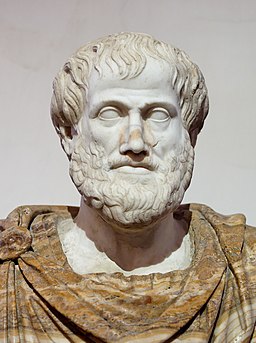
It is interesting to note the origin of the word metaphysics. Aristotle was a mind who had on opinion on virtually every intellectual matter of his time, and in ancient Greek society, there were many. Greece was a nation steeped in learning and focused on the culture of knowledge. As the Bible points out, "'For you are introducing some things that are strange to our ears, and we want to know what these things mean.' In fact, all Athenians and the foreigners staying there would spend their leisure time doing nothing else but telling or listening to something new." (Ac 17:20,21) Metaphysics, then was a term that was coined in the first century by an editor, who collected an assortment of Aristotle's writings on various subjects and compiled them into a book. That publication was entitled: Metaphysics. An example of Aristotle's influence and thought patters can be seen in how he added to a theory originated by an earlier philosopher called Empedocles, who had proposed without evidence, that everything was composed from four elements: Earth, Water, Air, and Fire. To this, Aristotle added a fifth element, which he called - Aether. Aether, was supposed to a heavenly element - a Divine substance. It was this element that was responsible for all the heavenly structures, such as: planets, stars and even the heavenly spheres on which the planets and Sun rested as they rotated around the earth!
Claudius Ptolemaeus - Ptolemy
Ptolemy (87-150 C.E.) came after Aristotle and added to his geocentric model by adding epicycles to it. Aristotle's world view, based, as it was on evidence-free speculation of a heliocentric universe, faced many challenges as evidence began to pile up. It was for this reason that to save the model, Ptolemy, being a great mathematician, in addition to being an astronomer was forced to add epicycles to the heliocentric model! Epicycles is a word that means "upon the circle." To our current ears, that doesn't make sense, but in the context of the ancient world, it meant a circle moving upon another, bigger circle, called a Deferent. Why were epicycles necessary to save the heliocentric model? In the centuries since Aristotle, it had been noticed that the planets, moon and Sun, did not all move uniformly, as they should have according to Aristotle's descriptions. The term given by the scientific community to this problem is retrograde motion. Understanding what the term means, will help us understand what the problem was. Retrograde - like many English words - is borrowed from Latin, in this case the Latin word retrogradus, which meant "backward-step." If there earth was stationary, the relative motion of the other planets would be absolute from our standpoint. However, the motion of the rest of planets was NOT always uniform around the earth. They would move anti-clockwise in their orbits, but occasionally, they would switch direction and take a step back and start moving in the opposite direction. It was this kink in Aristotle's model of the universe, that Ptolemy, a gifted mathematician was trying to solve with his introduction of epicycles. Thus the original orbit of these planets now became the large circle called a deferent, which moved in a counter clockwise direction, but upon this deferent Ptolemy now intrduced a second circle, which moved in the opposite direction - clockwise. So, as a planet was moving right to left in its supposed orbit around the earth, it would sometimes start moving right to left, because it we were looking at it as it moved through the top part of its epicycle!
Of course, the real solution to this conundrum was not the complicating mechanism of epicycles, but realising that the earth was not at the center of the solar system, but was itself orbiting the sun in its own orbit. Below, in Illustration 2, we see the real mechanism that produces the perspective paradox of retrograde motion. Retrograde motion, then, is an optical illusion created by the movements of planet Earth when in its own orbit it passes a planet that had been ahead of it in its own superior (or outer orbit). Planets whose orbits are farther from the sun than the earth's are said to have "superior" orbits, and planets like Mercury and Venus, whose orbits fall within earth's own orbit are said to have "inferior" orbits. In reality, none of the planets move backwards, or ever stop and change course in their orbits around the Sun! Only a heliocentric solar system could resolve the perspective paradox of retrograd motion. That is why retrograde motion is incompatible with a geocentric model of the solar system.
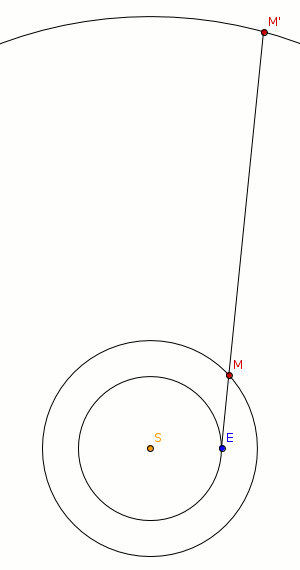
A paradox is simply something we cannot yet explain. A perspective paradox is something we can "see," and yet, not explain! All true science proceeds by resolving genuine perspective paradoxes. There are other kinds of supposed paradoxes in science - but these are not real. For instance, the grandfather paradox of time travel is called a paradox - it is not. Time travel is impossible for reasons you will learn later. Hence, any supposed "paradoxes" it creates, are not paradoxes at all, just incoherent thoughts about a supposed aspect of reality that in actual fact - does not exist. Genuine paradoxes, on the other hand are an authentic puzzle to be solved. And their resolution, always brings rich rewards in new scientific knowledge!
Scientists had to scramble to find a patch, to fix this problem with their world model. That fix were the epicycles introduced by Ptolemy. They allowed him to tailor the proposed movements of the celestial bodies to more closely follow their actual orbits through the sky. As such it was a better estimation of the Aristotelian model, but still founded on a geocentric model. Scientific theories are supposed to make reality easy to understand, because they reveal the fundamental underlying principles that connect seemingly unrelated entities. However, epicycles where anything but simple. Instead of simplifying the model of the universe they added great complexity - to everything! Please see Figure 6 below; and compare it to the simplicity of the orbits of the planets as seen in Illustration 2 for Earth and Mars!
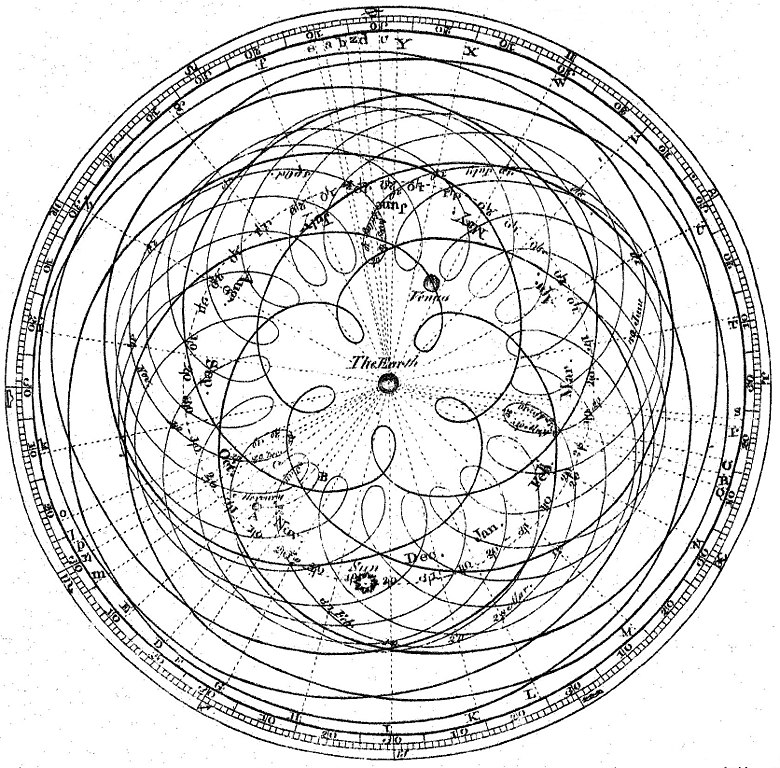
This is a question Ptolemy set out to answer. One of his last chronicled works, was a publication he called the Planetary Hypothesis. In it, he claimed the Sun was, on average, 1210 earth radii away from the earth. And what of the solidly fixed stars in the Celestial Sphere? He calculated the Celestial Sphere to 20,000 earth radii away, meaning he estimated that the edge of the universe was about 16.5 times farther from the earth, than the Sun. Interestingly, the Sun is now known to be 23,450 earth radii away from the earth. That means the sun is farther away from earth, than the ancients thought the edge of the universe, was.
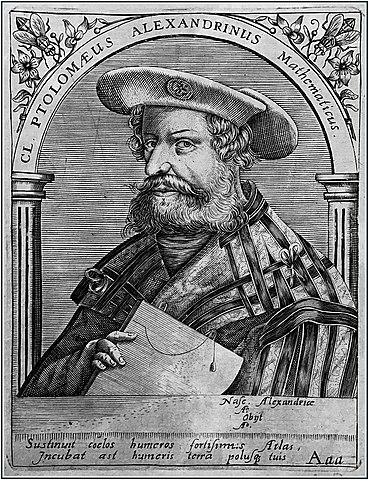
Ptolemy lived five centuries after Aristotle died and over the next 1500 years, there were some more additions and tweaks to their joint model, but always and in every case, the updates were still added to a geocentric model! Not until our next scientist did a firm challenge against the Aristotelian-Ptolemaic cosmological model arise.
Nicolaus Copernicus
We are now firmly in the fifteenth and sixteenth centuries. Copernicus, lived from 1473 to 1543. At this point in the history of mankind, the Church is firmly established and all matters scientific must be approved by it, before they are accepted by society. Indeed, in many cases new scientific ideas must be approved by the Church if they are to be published without opposition. Copernicus was himself a priest and did not publish his ideas on the heliocentric nature of the universe until he was dying - so strong was the influence of the Church and its false doctrines. Ptolemy and Aristotle before him had imagined how the universe might work, but Copernicus built an observation tower upon which to study the heavens and it was through these efforts that he surmised that it was possible that the earth was what had an orbit, and the sun was actually stationary and at the center of the universe. In 1514 he wrote Commentary on the Theories of the Motions of Heavenly Objects from Their Arrangements. From the title, you might imagine that it was due to empirical calculations that Copernicus thought of a heliocentric model of the universe, but that was not the case. It was known that the sun was bigger than the moon and it was thought that its orbit was much farther out than the moon's. Copernicus reasoned that since the moon and the sun were the same size in the sky and the sun was clearly much farther out from earth than the moon (as the sun had the moon pluse two planets betweeen it and earth), that the sun must therefore be much, much larger than the moon. This is because if objects appear to be the same size, but are at different distances, the one farther away must be larger than the nearer one to compensate for their apparent similarity in overall size. On this point he was correct. The sun is 400 times larger than the moon, but also 400 times farther away, that is why they appear to be the same size in the sky. His sound reasoning led him to conclude that it would make much more sense if the sun held the central position in the universe as it was the source of light and heat not only for our planet but for the other planets in the universe as well! As you have seen from Illustration 1, the sun rotating around the earth would be a very ineffiecient way to run the orbits of heavenly bodies. What's more, now that we know about gravity, the sun having such dynamics would wreak havoc with the gravitational pull of different celestial bodies. Thus, Copernicus concluded that the sun must be at the center of the heavenly bodies, and not earth, based not on new empirical evidence, but on the proper reasoning of the data that was already known! Infact, more than one and a half centuries before Copernicus, another brilliant astronomer by the name of Nicole Oresme (c. 1320-1325 to 11 July 1382) had put forward the heliocentric model of the universe as the correct model of the universe. When Copernicus argued about the dynamics of the heavens, he was taking a page out of the book of Oresme, who 166 years earlier had argued that it was more economical and thus made much more sense for the earth to be move than for the whole heavens to be daily rotating around the earth! His greatest rational contribution to this argument was that the heavens rotating around the earth and the earth rotating on its axis would look the same to earthlings. Remember that point! Being a religious man, he firmly belived in the Bible, in fact he was a Bishop. As to the Bible's statements that the sun moves (which was one of the main arguments of the Geocentrists), he noted that: "this passage conforms to the customary usage of popular speech," and was thus not to be taken literally - exactly as Galileo would argue more than two centuries later. Again, we see the pattern of the correct understanding of natural phenomenon being discounted, while erroneous ideas stubbornly flourish.
... In a time of darkness. Copernicus was a devout man of God who shed light on the progress of Science. He had, in fact, devoted himself to a life of serving God - as a priest. Deeply pensive, he reasoned in his mind that it would make more sense for the Sun, the largest heavenly body in the solar system - and what he thought was the universe - to be the stationary item with the planets revolving around it than the other way around. It had been known for some time that the Sun was much much farther from the Earth, than the moon. He thus reasoned, that, since this was so, but the Sun and moon appear to be the same size in the sky: that must mean the Sun is vastly bigger than the moon. On this basis, and the fact that he appreciated God's sense of economy in all his creations - he concluded that, perhaps it was the Earth - and not the Sun that did the orbiting: as that would have made much more sense from God's perspective as a Creator!
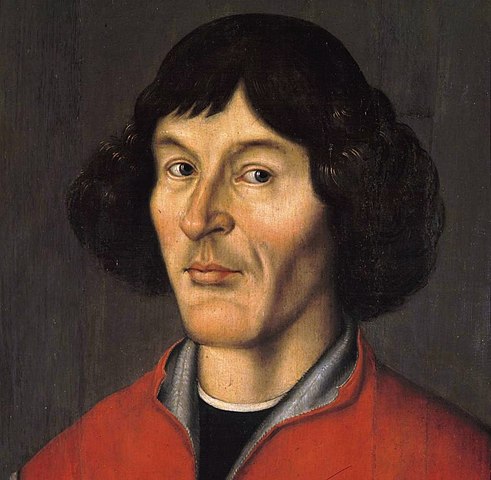
Solar System VS Universe?
It is important to note that, because humans had not yet seen planets beyond Saturn, at this time there was no distinction between the universe and our solar system. The two central features of the universe that allow us to distinguish between it and our solar system are the knowledge of the existence of other solar systems in our own galaxy and the existence of other galaxies! In the sixteenth century there were no such distinctions - the universe and our solar system were one and the same thing! Hence, when comparing heliocentrism to geocentrism, we will always refer to the center of the universe, though, the more immediate, technical term would be "Solar System."
EXPLANATORY NOTE:
When we compare the peace and harmony of Copernicus' 'universe' versus the inefficiency of Aristotle's beliefs and the endless complications of Intellectuals who are trying to fix a broken system, we see why Copernicus was convinced that it was not the Sun that revolved around the Earth, but rather, it was the Sun that was in the middle with all the planets orbiting it. He did not make this deduction using any new information. It was merely that the Sun was so much bigger than the moon, that to Copernicus, the Sun being the orbiting body made no logical sense! It would be the proverbial tail wagging the dog.
While the heliocentric worldview is the greatest of his scientific accomplishments, it is just as important to highlight some of Copernicus' lesser known accomplishments that greatly aided mankind's understanding of the universe. Copernicus was the first to correctly order the known planets: Mercury, Venus, Earth, Mars, Jupiter and Saturn - and determine their distances. He also correctly understood that the earth rotated a full revolution, and that such rotation on its own axis constituted a 24 hour day. A year, he said, was when the earth completed one full orbit around the sun. Copernicus also addressed how heavenly objects maintained their orbits. Before his heliocentric model, it was believed that the earth as the center of the universe, was a universal gravity anchor that held all celestial objects in place and controlled their orbits. With your up-to-date knowledge of how the planets actually work, you might not see the problem this would raise according for the geocentrists, if the earth was no longer the central body. But there was a problem. And it was a big deal. If the gravitational anchor was a function of the object at the center of the universe, then how would an earth in any position other than that central position be able to keep the moon in its obvious orbit around the earth? This was no small problem for middle age thinkers. Copernicus proposed a radical departure from those ideas: it wasn't just the object in the center that had gravity, but all heavenly objects had their own gravitational pull. This groundbreaking concept, which would later prove to be a forerunner to Newton's laws of Universal Gravitation would be disregarded by false religion and false science for many, many decades.
However, as successful as we now know the heliocentric model to be, it was not without its challenges. For one, if the earth was not stationary but rotated daily, how did objects on the surface of the earth not fall of? Such questions may seem foolish today, but in 1543 no one had the answer! While the earth was thought to be the universe's anchor, there was no problem with it having gravitational pull, but if the sun was at the center and the earth rotated daily on its own axis, how could it possibly produce the same affect? Though Nicolaus Copernicus proved to be a critical thinker on such matters, he nevertheless did not did crack that problem by providing empirical evidence or mathematical laws that would prove it to be the case. This question would have to be left to future generations of scientists to be resolved. Nevertheless, what he did know, he believed. And what was beyond his scope, he rightly left to those who would build on his work. Such was the case with a maverick and iconoclastic Italian scientist, named Giordano Bruno.
